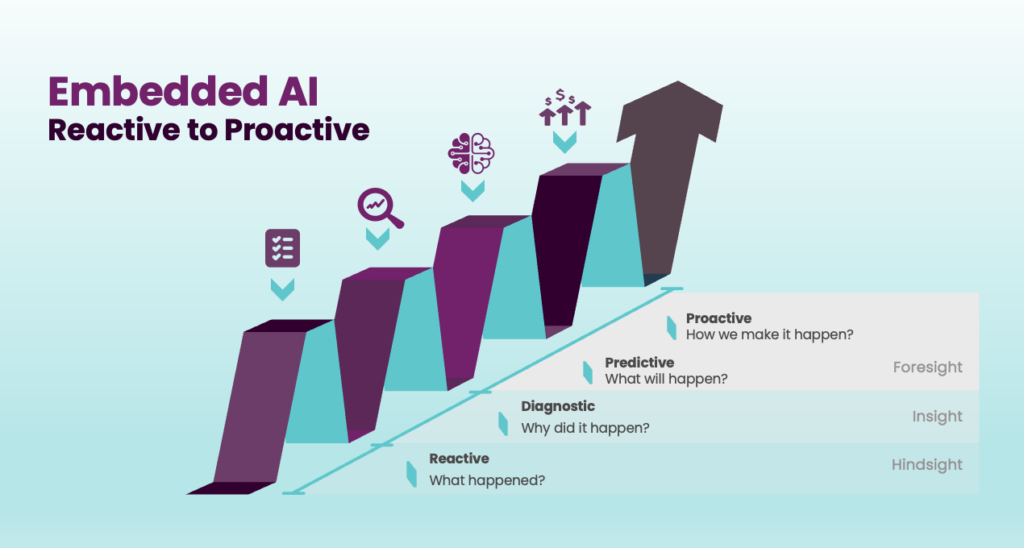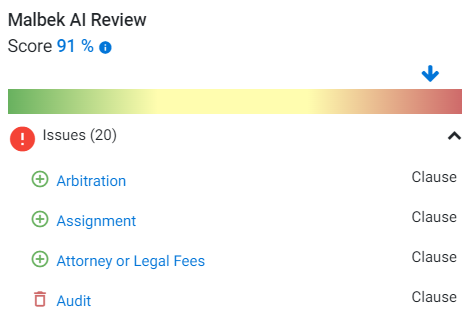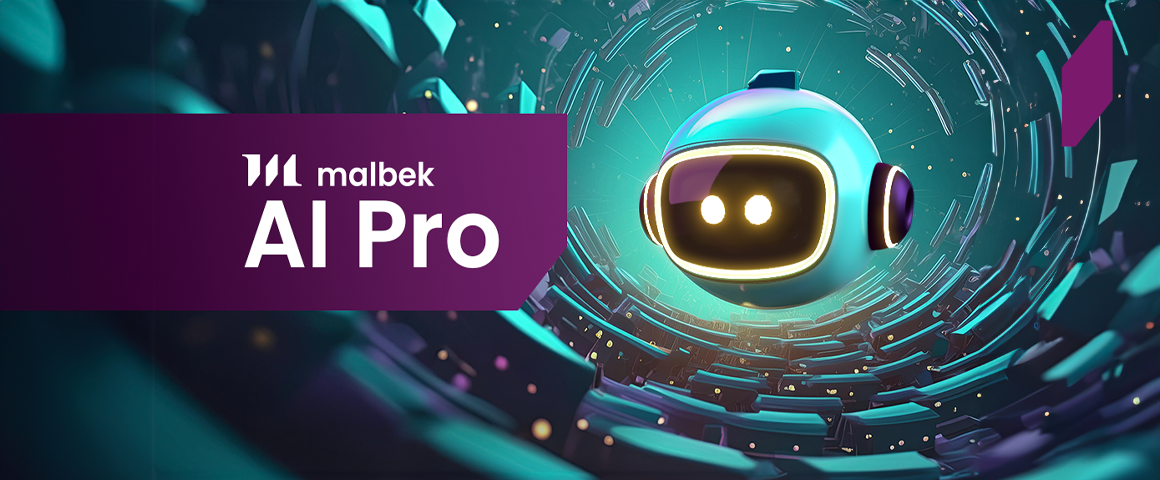The Top 10 Trends of Contract Lifecycle Management in 2025
Remember when contract management meant endless stacks of paper and manual reviews? Those days are long gone. AI isn’t just assisting with contracts anymore – it’s completely changing the game. The numbers tell the story: legal teams using AI-powered solutions cut their contract processing time by more than 77%, according to Gartner’s latest research. By 2027, 50% of businesses managing supplier contracts will use AI, signaling a dramatic shift in how businesses view contract management.
Think about what that means for your team. Legal professionals are spending less time on repetitive tasks and more time on what matters – strategic decisions that drive business forward. Procurement teams can process supplier agreements in minutes instead of days. Finance departments can spot risks and opportunities they might have missed before.
The next year will bring even bigger changes. We’re looking at ten game-changing trends that will redefine contract management as we know it. From AI that makes decisions on its own to systems you can control with just your voice – the future is closer than you think. And here’s the thing: Companies that embrace these changes aren’t just keeping up – they’re pulling ahead of their competition.
Trend #1 – The Rise of Agentic AI in Contract Management
Agentic AI is like the MVP of your legal team—always on, always learning, and never taking a coffee break. Unlike traditional AI, which requires user input and predefined actions, agentic AI can make independent decisions and take action autonomously, adapting to changing contract needs in real-time. This technology represents a quantum leap in contract management capabilities.
Autonomous Decision-Making Capabilities
Agentic AI goes far beyond basic contract analysis. This solution can evaluate contract terms, suggest modifications, and flag potential risks without human intervention. When a new contract arrives, the AI agent assesses it against your organization’s playbook, identifies deviations, and recommends improvements. It learns from every interaction, becoming more effective with each contract it processes.
The real power lies in its ability to adapt. If market conditions change or new regulations emerge, the AI adjusts its decision-making criteria automatically. It can even support complex negotiations, proposing alternative clauses and evaluating counteroffers based on historical data and current business priorities.
Multi-Agent Collaboration
Contract management rarely involves just one type of task. That’s where multi-agent systems shine. Think of multi-agent AI like an orchestra — each AI agent has a specific role, from compliance to risk assessment, but they all work together to keep contracts in harmony.
These agents communicate and coordinate their actions seamlessly. When reviewing a complex supplier agreement, the compliance agent identifies regulatory requirements while the risk assessment agent evaluates financial implications. The workflow agent then determines the optimal approval path based on the contract’s risk profile and value. This orchestrated approach ensures that nothing falls through the cracks.
Security and Control Mechanisms
With great power comes great responsibility. Agentic AI requires robust governance frameworks to ensure security and maintain control. Organizations implement multi-layer verification systems where critical decisions require human approval. Clear boundaries define what AI agents can and cannot do independently.
Advanced encryption protects sensitive contract data, while audit trails track every AI action. Organizations can set specific parameters for AI decision-making, ensuring alignment with business policies and risk tolerance levels. Regular performance monitoring helps identify and correct any deviations from expected behavior.
Real-World Applications
Let’s look at how this works in practice.
- Life sciences: A pharmaceutical company uses agentic AI to manage clinical trial agreements. The AI coordinates contracts across multiple research sites, ensuring regulatory compliance while adapting to each location’s requirements. When protocol amendments occur, the system automatically identifies affected contracts and initiates the necessary updates, maintaining compliance without delaying trials.
- Manufacturing: A global automotive parts manufacturer employs agentic AI to handle supplier contracts across its production network. The system monitors component specifications, quality requirements, and delivery schedules. When supply chain disruptions occur, the AI proactively suggests alternative suppliers and generates contract amendments to maintain production schedules.
- CPG (Consumer Packaged Goods): A major beverage company utilizes agentic AI to manage its complex distribution agreements. The system handles seasonal volume adjustments, promotional terms, and regional pricing variations. It automatically updates contract terms based on market demand patterns and coordinates with multiple distributors to ensure optimal product coverage.
- Retail: A fashion retailer leverages agentic AI for its lease management and vendor agreements. The system manages contracts for hundreds of store locations, automatically adjusting terms based on foot traffic data and sales performance. For vendor relationships, it handles everything from purchase orders to marketing collaboration agreements, ensuring consistent terms while adapting to each brand’s specific requirements.
Trend #2 – The Evolution of UI-Less Contract Management
With AI handling more decisions independently, the next logical step is removing unnecessary UI elements altogether, streamlining contract management into a truly hands-free experience. Gone are the days of clicking through multiple screens to find contract information. The next generation of contract management eliminates traditional user interfaces entirely, replacing them with natural conversations.
Voice and Chat-Based Operations
Imagine walking into your office and saying, “Pull up all supplier contracts expiring next quarter” or “Draft a standard NDA for this project.” The system understands context, intent, and urgency, delivering exactly what you need. Legal teams can review contracts through conversational Q&A, asking specific questions about terms, obligations, or risks. The AI responds with precise answers, pulling relevant sections and explaining complex clauses in plain language.
Seamless Integration with Existing Tools
This voice-first approach integrates directly with your daily workflow tools – email, messaging platforms, and document editors. You can request contract updates during a Teams meeting or approve changes via email. The system understands your permissions and role, maintaining security while eliminating the need to switch between applications.
Trend #3 – Reactive to Proactive Evolution

The future of contract management lies in shifting from response-based actions to anticipatory strategies. Traditional contract management often meant waiting for problems to surface before taking action. In 2025, AI systems will transform this approach, actively preventing issues before they materialize.
Key aspects of this proactive evolution include:
- Automated risk detection:
- Real-time monitoring of regulatory changes affecting contract terms
- Continuous analysis of market conditions impacting pricing agreements
- Instant alerts for potential compliance violations
- Early warning systems for supplier performance issues
- Automated identification of contract optimization opportunities
- Predictive analytics applications:
- Performance pattern recognition across contract portfolios
- Advanced forecasting of renewal outcomes
- Early detection of potential contractual disputes
- Assessment of changing market conditions’ impact
- Identification of favorable renegotiation timing
This shift to proactive management creates tangible business value. Legal teams receive alerts about regulatory changes affecting contract clauses months before implementation deadlines. Procurement professionals get advance warning of supplier issues, allowing time for contingency planning. Finance departments gain insights into potential cost impacts before they affect budgets.
The system continuously learns from each interaction, improving its predictive capabilities over time. When market conditions change, the AI immediately evaluates the impact across all relevant contracts. It suggests modifications to protect company interests and takes advantage of new opportunities.
Risk metering adds another dimension to proactive management. The AI assigns risk scores to contracts based on multiple factors, including historical performance, market conditions, and compliance requirements. These scores update automatically as conditions change, providing real-time visibility into contract portfolio health.

The result? Organizations move from firefighting to strategic planning. Teams spend less time solving urgent problems and more time optimizing contract value.
Trend #4 – Autonomous Contract Renewal & Execution
Think of AI as your digital twin, handling contract renewals and executions with precision and speed. The system learns your preferences, negotiation patterns, and decision-making criteria. It identifies renewal opportunities, analyzes performance data, and triggers renegotiations based on pre-set parameters.
When a contract approaches renewal, the AI evaluates past performance, current market conditions, and organizational goals before recommending action. This autonomous approach eliminates missed renewal deadlines and ensures optimal terms for each agreement. The AI can automatically adjust renewal terms based on supplier performance metrics, market benchmarks, and internal compliance requirements.
Advanced algorithms calculate the ideal timing for renegotiations, factoring in market conditions and organizational priorities. The system maintains a perfect balance between automation and control, flagging complex cases for human review while handling routine renewals independently.
Trend #5 – Smart Contracts & Blockchain
The advancement of quantum computing brings both challenges and opportunities to contract security. As traditional encryption methods become vulnerable, quantum-resistant encryption emerges as the solution. Smart contracts, secured through these advanced encryption methods, enable automated execution and verification of high-trust, high-value transactions. The technology ensures immutable records while maintaining the flexibility needed for complex business relationships.
The race for quantum-resistant security is about future-proofing contract operations. As quantum computing capabilities grow, organizations need encryption methods that can withstand future computational power. This emerging technology supports automated contract execution while ensuring unbreakable security through distributed consensus mechanisms.
Smart contracts automatically enforce terms, trigger payments, and maintain audit trails. The system verifies contract execution through multiple checkpoints, eliminating single points of failure. This creates a foundation for trusted business transactions that can withstand emerging security threats.
While quantum computing isn’t mainstream yet, forward-thinking organizations are already exploring quantum-resistant encryption to future-proof their contract security. Organizations should focus on protecting sensitive contractual data, ensuring their security frameworks can adapt to future technological advances.
Trend #6 – Embedded ESG Compliance
One of the hottest topics of 2025!
Environmental, Social, and Governance (ESG) requirements demand increasing attention in contract management. AI systems now automatically track and enforce sustainability clauses, diversity requirements, and regulatory standards. The technology identifies relevant ESG criteria, monitors compliance, and alerts stakeholders to potential issues.
Companies can prove their commitment to sustainability and social responsibility through verifiable contract data. The system automatically flags contracts that need updating when ESG requirements change. It measures and reports on sustainability metrics across the contract portfolio, enabling organizations to demonstrate compliance and progress toward ESG goals.
The AI continuously monitors supplier performance against ESG criteria, ensuring accountability throughout the supply chain. This automated approach ensures the consistent application of ESG standards while providing detailed reporting for stakeholder communications.
Trend #7 – Dynamic Contextual Pricing
Contract pricing evolves from static terms to dynamic, context-aware agreements. AI systems analyze real-time economic conditions, supplier data, and market trends to adjust pricing clauses automatically.
The technology considers multiple factors:
- supply chain dynamics
- currency fluctuations
- raw material costs
- competitive positioning
This adaptive approach ensures that pricing remains optimal throughout the contract lifecycle, protecting both buyer and supplier interests. The system automatically identifies opportunities for price optimization based on market conditions and volume commitments. It alerts stakeholders when pricing falls outside acceptable ranges and suggests adjustments based on comprehensive market analysis.
The AI maintains pricing fairness by comparing terms across similar contracts and market benchmarks. This dynamic approach to pricing helps organizations maintain competitive advantages while ensuring sustainable supplier relationships.
Trend #8 – Legal & Regulatory Harmonization
AI transforms compliance management across multiple jurisdictions. The system automatically suggests contract language updates to align with evolving global and regional regulations. Companies operating internationally no longer need to maintain separate contract templates for each region.
The AI adapts contract terms in real-time, ensuring compliance with local regulations while maintaining global standards. This intelligent harmonization significantly reduces legal review time and compliance risks, allowing organizations to expand into new markets with confidence.
The technology continuously monitors regulatory changes across jurisdictions, proactively updating contract language to maintain compliance. Teams receive automated alerts about upcoming regulatory changes, complete with suggested contract modifications.
The system maintains a comprehensive database of regulatory requirements, ensuring consistent application across all contracts. This automated approach to regulatory compliance enables organizations to operate confidently in multiple jurisdictions while maintaining consistent global standards.
Trend #9 – Multi-Lingual AI with Cultural Sensitivity
Language barriers and cultural nuances often complicate international contracts. Advanced Natural Language Processing now analyzes sentiment and cultural context in multi-language agreements. The AI understands not just the words but the intent and tone across different languages. It flags potential misunderstandings before they become issues and suggests culturally appropriate alternatives.
Teams can negotiate confidently across languages, knowing the AI catches subtle variations in meaning and cultural implications. The system maintains a deep understanding of cultural business practices and negotiation styles across regions. It provides real-time guidance during international negotiations, ensuring clear communication and mutual understanding.
The AI analyzes historical contract performance data to identify successful communication patterns and apply these insights to new agreements. This cultural intelligence enables smoother international business relationships and more successful cross-border contracts.
Trend #10 – Human-AI Collaboration
The rise of AI doesn’t eliminate the need for human expertise – it enhances it. While AI handles routine tasks and provides data-driven insights, human professionals focus on strategy and complex decision-making.
Legal teams use AI recommendations to make informed choices about high-stakes negotiations. Procurement specialists leverage AI insights for strategic supplier relationships. This technology serves as a powerful tool that amplifies human capabilities rather than replacing them. Success in 2025’s contract management requires finding the right balance between automated efficiency and human judgment.
Organizations that master this partnership gain significant advantages in both operational efficiency and strategic outcomes. The most successful implementations maintain clear boundaries between AI automation and human decision-making, ensuring appropriate oversight of critical contract decisions. Teams develop new skills to work effectively with AI systems, creating a powerful combination of technological efficiency and human expertise.
Looking Ahead: Making Informed CLM Decisions
The evolution of contract lifecycle management in 2025 points to one clear conclusion: AI-driven intelligence combined with robust security measures will define successful contract operations. Most companies assume that AI in CLM is all the same — just another automation layer bolted onto an existing system. We see agentic AI as the foundation of modern CLM, not simply as a bolt-on feature. Malbek’s AI capabilities are deeply embedded in our CLM, ensuring contract-aware insights, seamless workflows, and truly intelligent automation. Malbek leads AI transformation through its innovative Ensemble LLM approach, which dynamically selects appropriate AI models for specific use cases while maintaining strict data security.
Key considerations when evaluating CLM solutions should include how the platform handles AI implementation. The future of enterprise CLM is conversational, and the best tools won’t demand that you adapt to them; they will adapt to you. Malbek’s approach of using multiple cutting-edge large language models working in concert – including OpenAI and Anthropic – delivers enhanced accuracy and reliability. This “chain of verification” prompting mechanism ensures reliable results through continuous validation and confidence scoring.
The future of CLM isn’t just coming — it’s here. The real question is: Will you lead the charge or play catch-up? Malbek’s AI Pro capabilities exemplify this balance, offering sophisticated features like our AI agent, Bek, auto-running playbooks, and AI-guided workflows while maintaining clear guardrails for human oversight, plain language explanations of contract details, and more. As organizations evolve toward more strategic contract operations, solutions that combine innovation with practical implementation will become increasingly vital.







